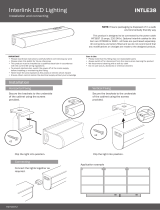
Overview
This document contains instructions necessary for the installation and
operation of the Perle 10/100 and Gigabit (10/100/1000) Advanced
Powered Ethernet Extenders. These Ethernet Extenders enable
Ethernet communication across a single pair of copper wires such as
2-wire twisted pair telephone wire or coax cable using VDSL2
technology for extended distances.
The Perle Advanced Power Ethernet Extenders are available in L and
E models such as the eXP-1S110E and the eXP-1S110L. In order to
use the advanced power functions, an L model must always be used
in conjunction with an E model. These Ethernet Extenders can also
be used with other Perle Ethernet Extenders if advanced power
functionality is not required.
In a typical installation the L model would be at a central site and the
E model at a remote site and the L model would power the E model
via the VDSL line.
L Models Characteristics
The L models, such as the eXP-4S1110L-RJ are typically used in the
central location and have the following characteristics.
• Can provide power over the VDSL line and communicate with a
remote Extender (E or PE model) over the same VDSL line.
• Can communicate with any other Perle Ethernet Extender if remote
powering is not required.
• Can draw power from the Terminal Block connector, Barrel
connector or from the Ethernet port 1 (if connected to a compatible
PoE Power Sourcing Device (PSE) such as a switch).
E and PE Models Characteristics
The E or PE models such as the eXP-4S110E-RJ are typically used
in the remote location and have the following characteristics.
• Can be powered by and communicate with an L model over the
VDSL line. Alternatively, they can draw power from the Terminal
Block or Barrel connector.
• They can communicate with any other Perle Ethernet Extender if
power by VDSL link is not required
• Can act as a PSE to power equipment connected to the Ethernet
port.
























